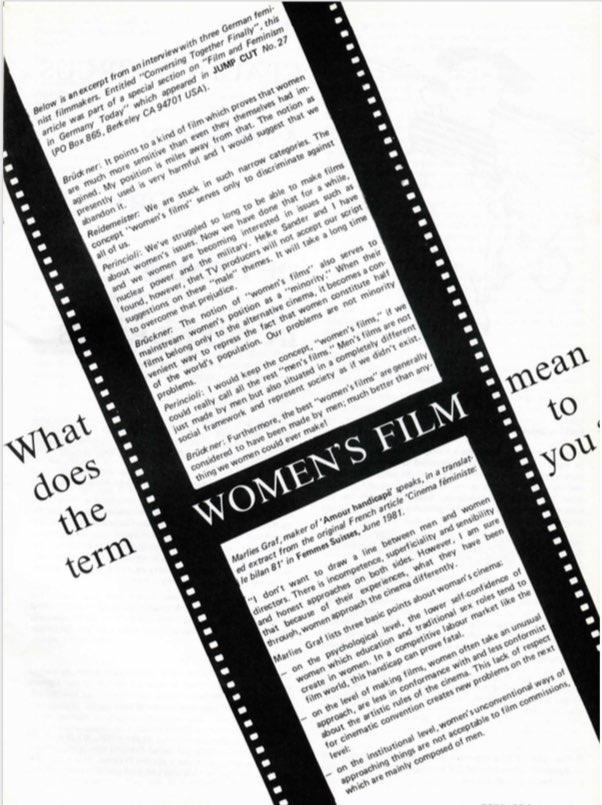VIDEO IN THE VILLAGE
by Dembele Sata Djire
from: Development Vol XI No 4 May 1983 (Published by the UN University & the Division for Economic and Social Information/DPI).
Technology does not work on its own. It has to be selected to address a problem and then put to work to solve it. In Mali, we have chosen video as a tool for village development, particularly to help women. The problem is easily defined.
The Republic of Mali has a populattan of seven million, nearly all of them live in rural areas and 51 per cent are women. Some 95 per cent of these women are illiterate, which greatly reduces their participation in the country's economic life. When we looked rrxire closely, we found that women in different communities throughout the country had some common problems.
They had very demanding daily responsibilities - they had to fetch water, find fuelwood, prepare meals, care for the children, work in the fields, which did not leave them much
time to do other things. In addition, husbands were reluctant to let them attend literacy classes and the women themselves lacked motivation.
Since 1977 we have had a programme, called the Participation of Women in Development, designed to promote the essential concerns of women and aimed at improving their living conditions. In June 1980, we started with financial help from the UN Fund for Population Activities (UNF-PA) and technical assistance from the UN Educational, Scientific and Cultural Organization (UNESCO) - a project called: The Use of Portable Video in Education and Promotion of Women to Support the Literacy Courses and to Increase their Effectiveness.
We found video to be an excellent tool for training, as well as for sensitizing and motivating. FYogrammes can be viewed and discussed immediately after recording; assuring real feedback, of the sort which influences perception and leads to decisions at various levels. People in different regions, with different outlooks, can get to know one another and interact through the medium. Programmes about a tie-dye cooperative in Segou and a gardening cooperative in Banankoroni, for example, would be interchangeable and mutually beneficial to the two regions.
Video is an excellent training tool. Tapes can be viewed and re-viewed during classes. Errors can be corrected and the programmes themselves improved. The editing equipment allows programmes to be adapted and changed for different audiences and objectives. Not least, the possibility of repeated erasure and reuse of video cassettes is a singular advantage, especially for a developing country like Mali.
The equipment itself is easy to learn to use; even most repairs are simple. It is relatively inexpensive, durable and not affected by climatic variations. The medium overcomes illiteracy as the written word cannot hope to do. Given the basic equipment, even villagers without formal education can become real participants in the whole process. Since its mid-1980 launch, the project has tzken video to 3,000 people in 30 villages in three of Mali's seven regions. It will be extended to cover the whole country as soon as possible. We need to add to our stock of equipment and, concurrently, provide adequate training in maintenance and repairs because self-reliance in this is a top priority.
We already have 5 technicians and 4 literacy workers trained by video consultants in the use of the equipment — camerawork, handling of decks and televisions etc., and editing techniques — and the Video Team in turn has introduced 15 rural leaders to portable video production. These 15 can cope with such things as using the camera, image sequences, programme planning and playback. So far, 105 rural literacy teachers have been trained by video; and the medium has allowed us to make a number of programmes about health and socio-economic activities of women, which are of very wide value.
The objective of the specific video programmes which started in June 1980, was primarily to inform, organize and motivate disadvantaged populations. The communications
materials were to be used to raise awareness of, say, family health problems, and to encourage women to play an active art in resolving socio-economic problems, to be involved in harmonious development.
At first video was regarded as a sophisticated system to be handled with special care. It has turned out to be a pliable, easy-to-handle instrument informing and training. Its great communication potential has enabled the mobilization of whole village populations, and those of surrounding villages as well, in development programmes. The numerous requests we now get for our equipment, from other services and organizations, testify to its impact on rural Mali.
Dembele Sata Djire is Chief, Division for the Promotion of Women, National Department for Functional Literacy and Applied Linguistics (DNAFLA), Republic of Mali. Her special interest lies in producing video programmes on women's activities and community projects.


